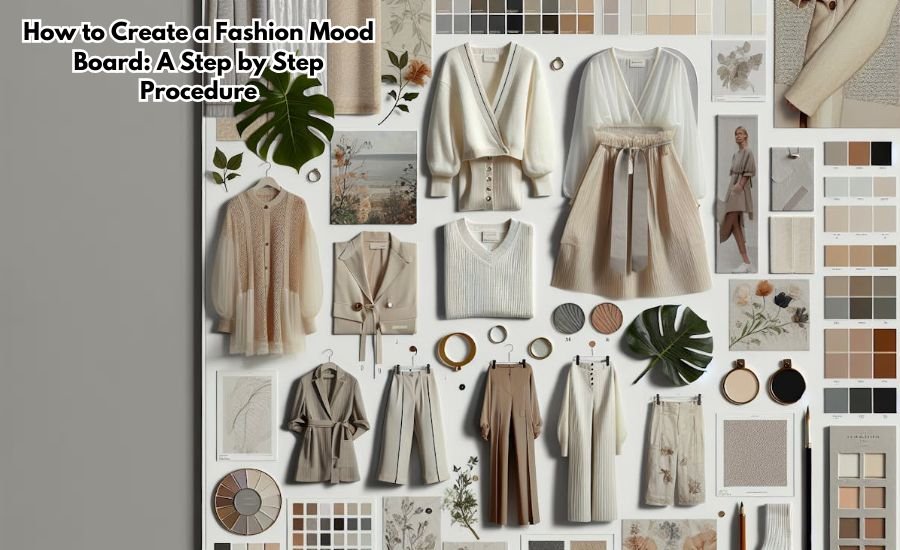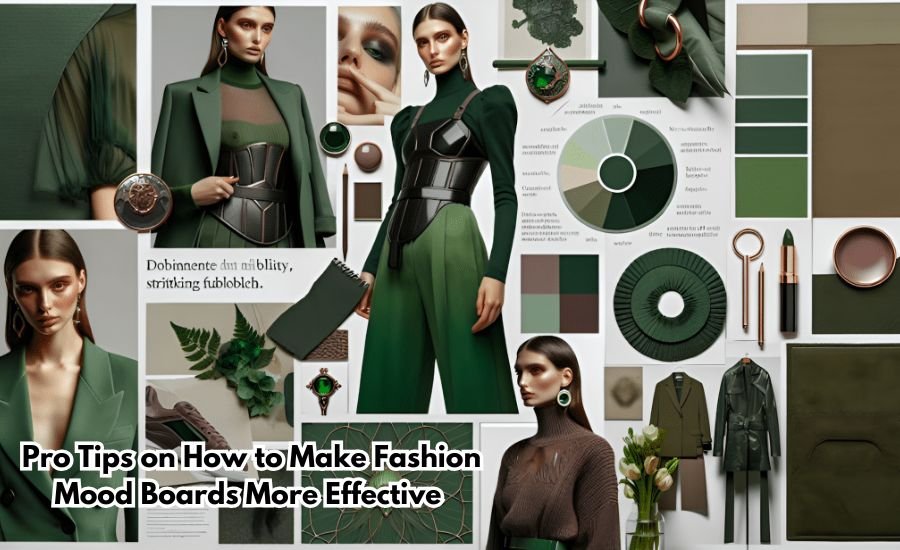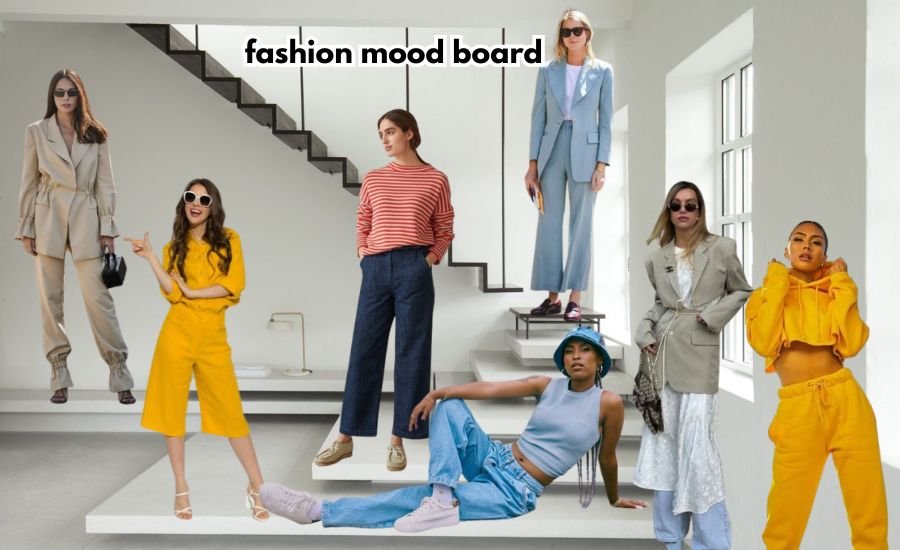There is more to a fashion mood board than just serving as a simple collage of images; it becomes a clear cut visual roadmap for any fashion project that combines clarity, unification, and creativity in the process. It serves as a tangible representation of an idea, internalizing abstract notions so they can be more easily communicated. Mood boards are indispensable for designers, stylists, and even fashion enthusiasts when it comes to channeling the vision into something that’s organized and inspiring. Fashion is an ever changing world, from trends that change with every new season to styles that emerge and disappear the next, to channels of creativity that flow in so many ways. This is where the mood board features heavily in bringing that fluidity to a fix, catching ideas and anchoring them against a very focused framework. It transforms scattered thoughts into a clear, visual narrative, whether you’re working on a new clothing line, a photoshoot, or a personal styling project.
Key Reasons Why Fashion Mood Boards Are Essential

Clarifies Your Vision
Indeed, mood boards usually work where the project intent has been defined. They focus scattered thoughts into a central idea, providing a clear foundation for creative work. For example:
- Really, if you’re off designing something minimalistic for a fashion line, your boards might really have clean lines and neutral tones with modern textures.
- Your collection would be an inspiration for a Bohemian theme. The collection inspires vibrant prints, flowy silhouettes, and earthy toned palettes.
Painless Innovation
These mood boards create a momentum for inspiration. They allow unlimited experiments with unexpected combinations of textures, colors, and themes. For instance:
- Blending rustic materials with luxurious fabrics might inspire a unique collection.
- Mixing futuristic designs with retro esthetics could result in groundbreaking fashion statements.
Supports Collaboration
In group projects, mood boards help to specify insight alignment among everyone. Regardless of who you are working with whether client, team, or partner a well defined mood board serves as a built in consistency and shared understanding. It is officially made to show your concept that it is much easier to take feedback on and stay in line creatively.
Sets the Tone for Your Project
Contrary to the usual designs of a typical moodboard that act as a kind of blueprint usually setting the overall tone and mood of your work, they let you kind of visualize how colors, patterns, and themes ebb and flow with the intent that your project also gets some sense and purpose.
Enhances Presentation
In establishing certain ideas for the stakeholders, mood boards give a serious and strong presentation of a vision. These well created boards usually convey a lasting message and showcase a deep sense of thoughtfulness and creativity.
Key Differences Between Physical and Digital Mood Boards
| Aspect | Physical Mood Board | Digital Mood Board |
| Creation Tools | Magazines, scissors, glue | Canva, Pinterest, Adobe Spark |
| Portability | Limited to physical location | Easily shared online |
| Customization | Hands on, tactile experience | Flexible and easy to edit |
| Time Consumption | More time intensive | Faster to assemble |
This will make it easy for you to select the format that is most helpful for your project and workflow.
Fundamental Elements of a Fashion Mood Board

Every fashion mood board consists of several critical elements that work together to tell a story.
Images
Images form the basis on which the mood boards rest. They can vary from photographs of clothing to the great outdoors, structures, or anything that fits along with what you intend. For example, if you’ve been producing a beachwear collection, you might put pictures of the ocean, shells, and even sandy landscapes onto the board.
Color Palette
Colors set the emotional tone of the project. Such a palette is said to integrate the project. By integrating spring with pastel precedence, it could be said that winter might be well suited to match bold and dark tones.
Textures and Fabrics
Adding swatches of fabric or images that represent specific textures (like leather, silk, or denim) brings depth to your board. For a tactile effect, physical boards can include actual fabric pieces.
Typography and Words
Incorporating words or fonts that represent the theme adds clarity. For instance, a board for a romantic theme might feature words like dreamy or elegant in cursive fonts.
Inspirational Elements
Inspiration can come from anything; art, quotes, music, or historical references. Including those on your board adds context and depth.
How to Create a Fashion Mood Board: A Step by Step Procedure

So, here goes a full guide step by step on how to create your very own fashion mood board:
Step 1: Identify the Objective
Understand why you are creating the mood board. Is it for a fashion collection, a branding project, or personal inspiration? Knowing what you have in mind attracts the right materials.
Step 2: Collect Inspiration
Look for visuals that inspire you. Here are some popular sources:
- Pinterest and Instagram: Endless visuals and ideas for every theme.
- Magazines: Tear out pages with outfits, patterns, or textures that resonate.
- Your Own Photos: Personal photos can add a unique touch.
Step 3: Choose the Format
Decide between a physical or digital mood board.
- Physical Mood Boards: Use a corkboard, cardboard, or a scrapbook with printed materials, fabric swatches, and sticky notes.
- Digital Mood Boards: Tools like Canva, Milanote, or Photoshop are perfect for organizing visuals digitally.
Step 4: Arrange and Organize
Organize your materials in a way that makes sense to your concept. Start by grouping similar textures, colors, and patterns. Utilize layering to include profundity and complexity.
Step 5: Refine the Final Look
As your project evolves, continue tweaking your mood board to better reflect your vision.
Types of Fashion Mood Boards
There are various styles of fashion mood boards, each serving a unique purpose.
Seasonal Mood Boards
These are created to reflect the themes of a specific season.
| Season | Key Colors | Textures/Patterns |
| Spring | Pastel shades | Floral patterns, lace |
| Summer | Bright tones | Lightweight fabrics |
| Fall | Warm earthy tones | Knits, wool, and plaid prints |
| Winter | Deep blues, whites | Velvet, faux fur |
Brand Specific Mood Boards
These concentrate on the overall esthetics of a brand. For instance, while designing for a luxury brand, you might use the most precious hues, metallic accents along with rich luscious fibers like silk and velvet.
Theme Based Mood Boards
For projects with specific themes, like retro, Bohemian, or futuristic, you can curate visuals that represent the chosen era or style.
Runway Inspired Boards
These boards take inspiration from high fashion shows and are showcasing bold designs with different textures and avant garde elements.
Pro Tips on How to Make Fashion Mood Boards More Effective

Creating a mood board for fashion purposes is both an art and a science. Below are the following tips that can take your board up and above:
- Stay Consistent: have a definitive central theme and do not stray from this by introducing clashing elements with the overall concept.
- Use Balanced Layouts: Make for a more attractive board by avoiding clutter. Use grids or defined sections for organization.
- Intricate Layers: This could include building depth using overlapped images, textures.
- Emphasize key elements: Add captions, or labels, or sections that call out certain areas of the board.
- Keep Updating: Your mood board should evolve with your project.
The Common Mistakes that One Should Avoid
Mistakes do happen to even the most talented designers. In creating a mood board, be sure to avoid the following:
- Overcrowding: Too many elements can overwhelm and confuse viewers.
- Ignoring the theme: Adding unrelated visuals can disrupt the board’s coherence.
- Poor Quality Images: Low resolution images can make the board look unprofessional.
Skipping Labels: Without captions or descriptions, others may misinterpret your ideas.
Conclusion
A mood board in fashion is not simply a collage of visuals but rather a source channeling the creativity and refinement of ideas as well as clarification in the fashion designing process. Whether it be a professional or just an admirer of fashion, mood boards have proved invaluable in taking the audience from idea to reality. A mood board is an organization of inspiration towards a narrative thread, breaking it down to achieve complexity in ideation. They enable collaboration and encourage innovation.
This is a visual language that bridges the gap between abstract thought and concrete reality in any creative journey. Individuals who want to discover their passion most often use mood boards in the exploration and definition of personal style, while professionals use mood boards as a foundation by which projects become entrailing and aligned. So get up and do it,Start making your fashion mood board today.
Read You Have To Know: Fashionistahub
FAQs
What does it mean to create a mood board in fashion?
This term refers to the artistic board that houses and portrays the ideas, inspirations, and conceptualization of a fashion project. The fashion mood board may consist of images, colors, textures, fabric samples, and other elements which would go toward conveying the tone and direction of the project.
Why is a fashion mood board beneficial?
Mood boards clarify your vision, are a source of inspiration, and help make groups creative and collaborative. Mood boards present an orderly form in which ideas can be organized and effectively shared with clients, teams, or collaborators.
Who Uses Fashion Mood Boards?
From fashion designers to stylists, all kinds of people use mood boards, including students, marketing teams, and even hobbyists. Mood boards are just one form of organizing one’s thoughts and guiding one’s project in both profs and amateurs in fashion.
Are mood boards only of the physical type?
No, the mood boards may be either physical or virtual. Physical boards generally include printouts from magazines, swatch of cloth, sketches, while digital mood boards are developing on the applications like Canva, Pinterest, or Adobe Spark.
How long will it take to build a mood board?
Depending on the project complexity, mood board developing takes different lengths of time: the bare bones of mood board can take a couple of hours to come up with, while spending more time on it may leave it in the works for a day or longer.
Can I change my fashion mood board later?
The mood boards, however, are very flexible. Changes can be made or amended, keeping them relevant to your vision to ensure that the mood board says the same thing as the evolving project.
How do I start creating a fashion mood board?
Firstly, think about what your project is really about the theme or concept and gather all relevant visuals, fabrics, or anything else significant to you within that concept to arrange together cohesively on the board or digital area where it will finally be stored, ensuring it tells an entire story visually.
Will it be possible to utilize mood boards for personal projects?
Mood boards are not for professionals only. You can also create one to explore your personal style, plan your outfits, or redesign your wardrobe.
In what ways do mood boards foster creativity in fashion?
They are a place to play around with colors, shapes, and images for inspiration without worrying about the outcome: mix and match until you find that perfect combination.
How do mood boards enhance collaboration?
Sharing your mood board with clients, teams, or collaborators direct everyone toward a common understanding of the project vision. This avoids miscommunication and helps in getting one outcome.
